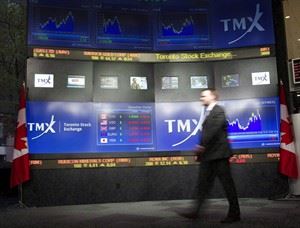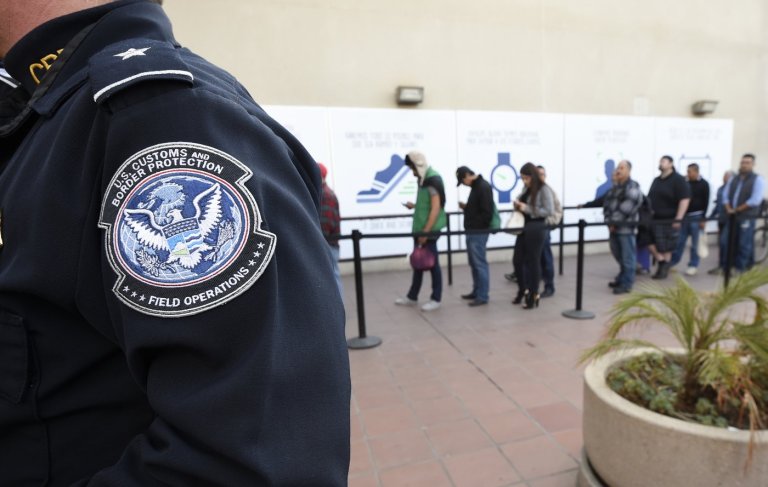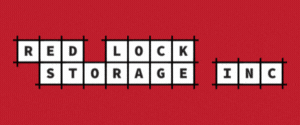
TSX, U.S. markets set for a lower open as world markets, commodities drop
TORONTO – North American markets were headed for a lower open Monday after a dismal performance overseas in the majority of Asia and Europe, a possible signal that the record-high climbs seen last week may be coming to an end.
The Dow Jones industrial futures were down 35 points to 15,033, the Nasdaq futures declined 10.50 points to 2,965, while the S&P 500 futures index dipped 4.3 points to 1,625.30.
The Canadian dollar was up 0.17 of a cent to 99.06 cents U.S.
The world’s markets have been on a high run as of late, due to hopes over the U.S. economy, signs that Europe’s debt crisis is easing and continued support by the world’s leading central banks.
Many indexes, including the Dow in the U.S. and Germany’s DAX, have struck a series of all-time highs in recent weeks, while others such as Japan’s Nikkei have hit multi-year peaks.
But the markets may be set for a pullback, as prices for oil, gold and copper weakened on last week’s gains.
The June crude contract was down 34 cents to US$95.68 a barrel. June gold bullion dropped $3.90 to US$1,432.70 an ounce, while July copper was flat at US$3.36 a pound.
Traders were awaiting a number of key economic reports set for release this week in the U.S.
On Monday, monthly U.S. retail sales figures for April, a key component of how the country is doing, will be released.
Investors have seen evidence that the U.S. economy is gaining traction, particularly in the jobs market, but economists expect Washington will report a decline for the second time in as many months as a result of the higher Social Security tax that kicked in this year.
Overseas, the DAX fell 0.7 per cent to 8,222 while the FTSE 100 index of leading British shares was down 0.3 per cent at 6,405. The CAC-40 in France was 0.5 per cent lower at 3,936.
Australia’s S&P/ASX 200 rose 0.1 per cent to 5,210.30 and South Korea’s Kospi rose 0.2 per cent to 1,948.70. Hong Kong’s Hang Seng fell 1.4 per cent to 22,989.81.
Mainland Chinese shares were mixed as government data showed slightly smaller-than-expected increases in industrial production and retail sales in April. The Shanghai Composite Index fell 0.2 per cent to 2,241.92. The smaller Shenzhen Composite Index rose 0.3 per cent to 974.20.
The main rosy story out of Asia was Japan’s stock market.
The Nikkei jumped to its highest close in more than five years after global finance leaders effectively backed the Bank of Japan’s stimulus program as a legitimate attempt by the country to get out of its two-decade era of stagnation.
Japanese Prime Minister Shinzo Abe, elected late last year on promises to revive the world’s third-largest economy, has implemented a policy mix of increased public spending and aggressive monetary easing.
On Monday, the Nikkei rose 1.2 per cent to 14,782.21, its highest close since December 2007. The index has soared more than 42 per cent since the beginning of the year.
Japan was a main talking point at a weekend meeting of finance ministers and central bankers from the Group of Seven leading developed economies, including Canada. All refrained from criticizing the Bank of Japan’s policy, and accepted that the motivation was to get demand growing, not to weaken the yen.
Join the Conversation!
Want to share your thoughts, add context, or connect with others in your community? Create a free account to comment on stories, ask questions, and join meaningful discussions on our new site.




















Leave a Reply
You must be logged in to post a comment.